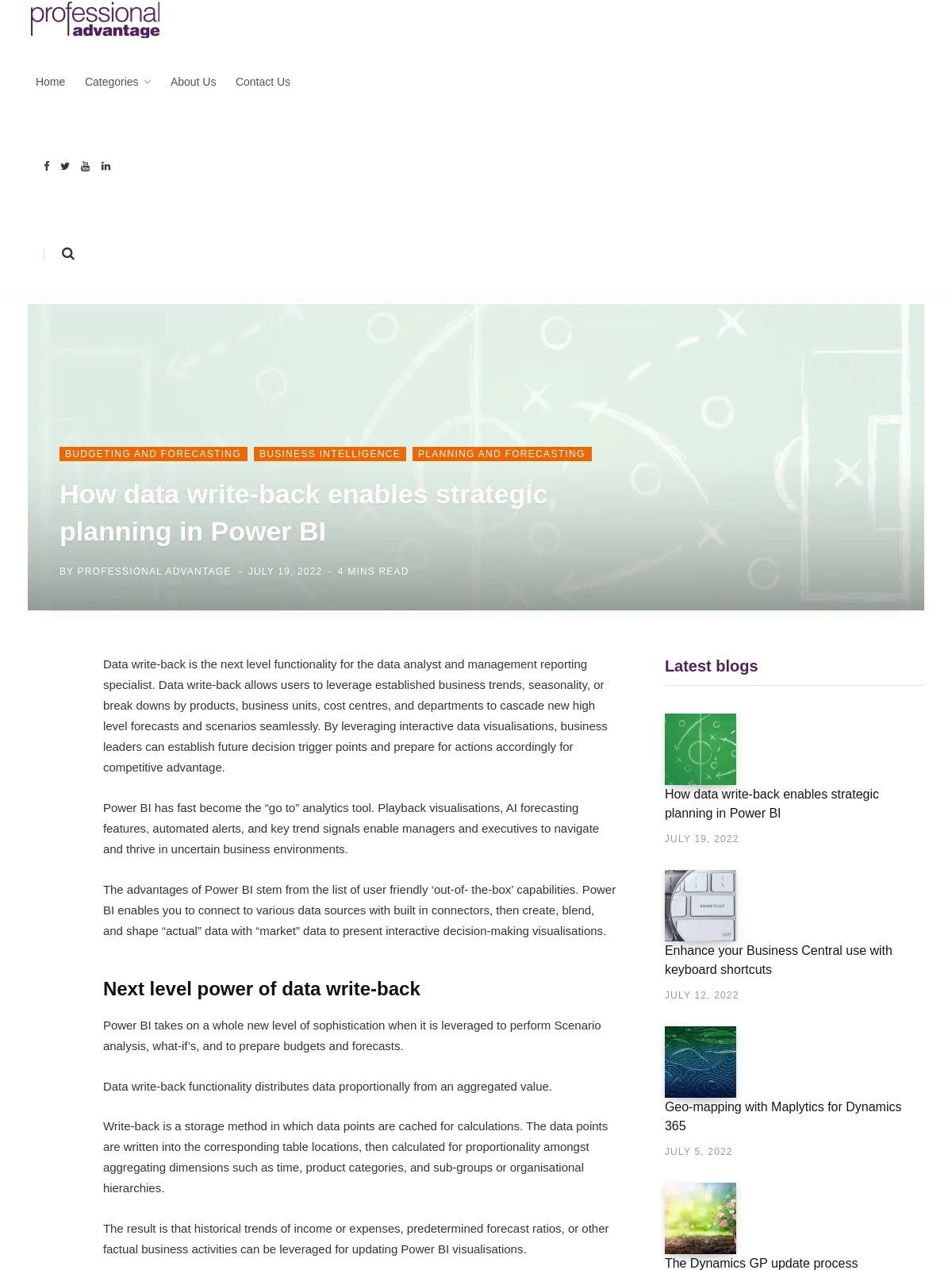How data write-back enables strategic planning in Power BI
Blog: Professional advantage - BPM blog
Data write-back is the next level functionality for the data analyst and management reporting specialist. Data write-back allows users to leverage established business trends, seasonality, or break downs by products, business units, cost centres, and departments to cascade new high level forecasts and scenarios seamlessly. By leveraging interactive data visualisations, business leaders can establish future decision trigger points and prepare for actions accordingly for competitive advantage.
Power BI has fast become the “go to” analytics tool. Playback visualisations, AI forecasting features, automated alerts, and key trend signals enable managers and executives to navigate and thrive in uncertain business environments.
The advantages of Power BI stem from the list of user friendly ‘out-of- the-box’ capabilities. Power BI enables you to connect to various data sources with built in connectors, then create, blend, and shape “actual” data with “market” data to present interactive decision-making visualisations.
Next level power of data write-back
Power BI takes on a whole new level of sophistication when it is leveraged to perform Scenario analysis, what-if’s, and to prepare budgets and forecasts.
Data write-back functionality distributes data proportionally from an aggregated value.
Write-back is a storage method in which data points are cached for calculations. The data points are written into the corresponding table locations, then calculated for proportionality amongst aggregating dimensions such as time, product categories, and sub-groups or organisational hierarchies.
The result is that historical trends of income or expenses, predetermined forecast ratios, or other factual business activities can be leveraged for updating Power BI visualisations.
Write-back is particularly useful for the rapid forecasting of future periods, creation of high level “what-if’s”, and scenario analysis. Examples of where the benefit of Power BI visualisations is leveraged with data write-back features include:
Data write-back use cases
- What-if analysis scenario planning.
What-if analysis is used for modelling changing business factors such as new product introductions by geographical regions. Data write-back can play a pivotal role in Power BI visualisation for modelling decision scenarios for growing new products, brands, and branches when executing market entry decisions. In particular, product viability analysis such as cost volume profit and break even analysis are amplified with break scenario planning.
- Top Down cascade of forecasts and plans.
Accelerate high level top down planning scenarios. Top line business unit numbers can be adjusted, and the data write-back functionality breaks back the data automatically across all cascading departments, products, and accounts according to historical trends. Differences in top down scenarios can be visualised in Power BI to confirm critical decisions.
- Interactive and Rolling forecast.
A key benefit of data write-back in Power BI visualisations is the ability to create new forecast versions using a combination of actuals, YTD, and previous forecasts. This is achieved by transferring business trends from the combination of the actuals and planning months. Write-back data feature is then used to maintain the business patterns while incorporating new facts, opportunities, or changes in expense plans.
Stand alone, Power BI is a leading self-service Business intelligence platform.
When Power BI is combined with the power of data write-back functionality, the Power BI analytics platform lunges ahead of its analytics rivals.
For the serious data analyst and management reporting specialist, Power BI integrated with data write-back features will take your organisations critical decision making to the next level. The outcomes of enhanced data visualisation will optimise the services to your customers and ultimately advance your financial sustainability.
See it in action
In this short video we demonstrate a what-if analysis use case. Here we forecast the revenue from a new product launch, modelling the forecast on the sales history of a similar product. We then analyse the outcome in Power BI by using write-back functionality to forecast best and worst case scenarios.
Learn more about Power BI and Kepion here.
The post How data write-back enables strategic planning in Power BI appeared first on Enterprise Software Blog - Professional Advantage.
